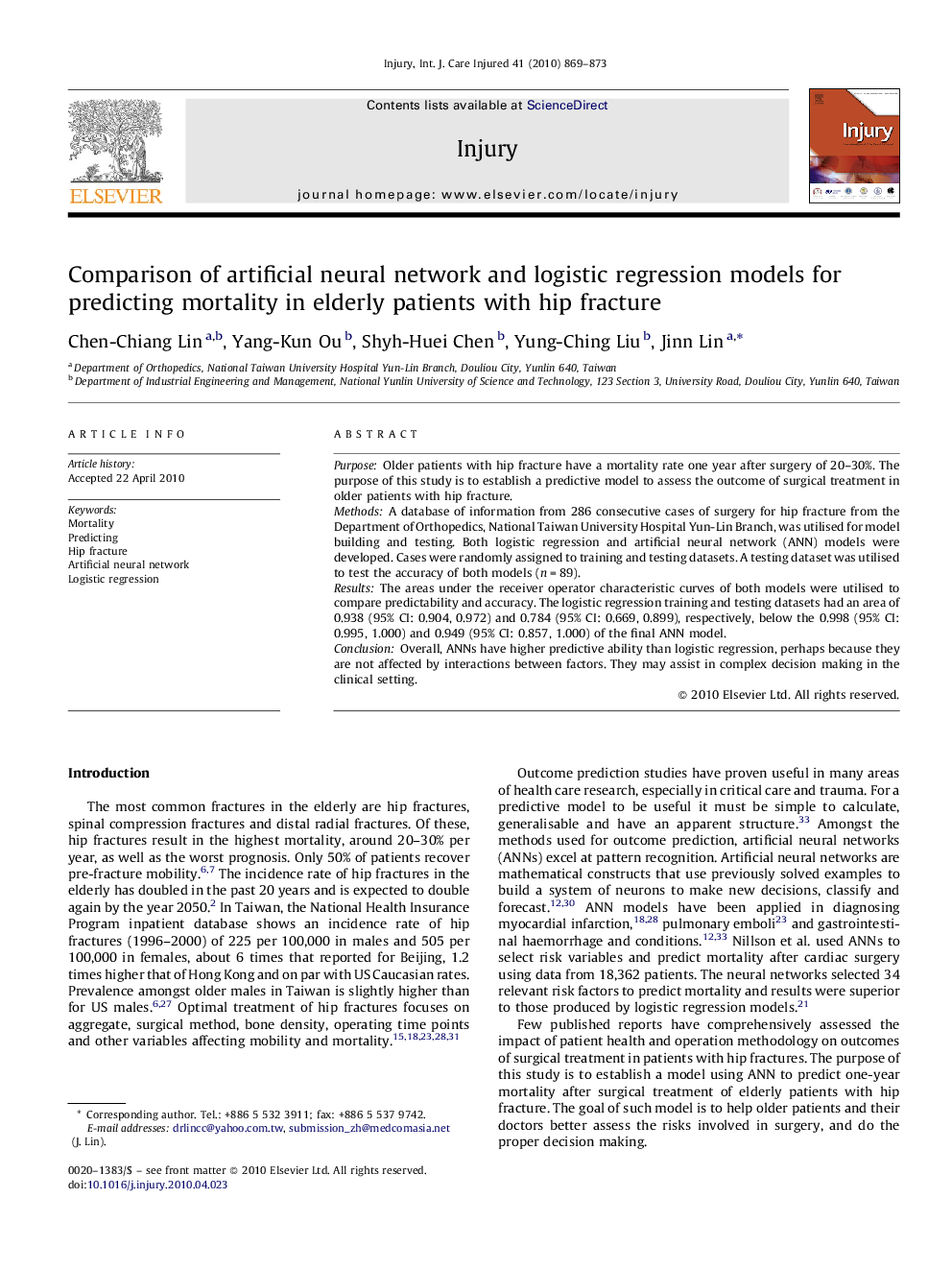| کد مقاله | کد نشریه | سال انتشار | مقاله انگلیسی | نسخه تمام متن |
|---|---|---|---|---|
| 3241669 | 1206086 | 2010 | 5 صفحه PDF | دانلود رایگان |

PurposeOlder patients with hip fracture have a mortality rate one year after surgery of 20–30%. The purpose of this study is to establish a predictive model to assess the outcome of surgical treatment in older patients with hip fracture.MethodsA database of information from 286 consecutive cases of surgery for hip fracture from the Department of Orthopedics, National Taiwan University Hospital Yun-Lin Branch, was utilised for model building and testing. Both logistic regression and artificial neural network (ANN) models were developed. Cases were randomly assigned to training and testing datasets. A testing dataset was utilised to test the accuracy of both models (n = 89).ResultsThe areas under the receiver operator characteristic curves of both models were utilised to compare predictability and accuracy. The logistic regression training and testing datasets had an area of 0.938 (95% CI: 0.904, 0.972) and 0.784 (95% CI: 0.669, 0.899), respectively, below the 0.998 (95% CI: 0.995, 1.000) and 0.949 (95% CI: 0.857, 1.000) of the final ANN model.ConclusionOverall, ANNs have higher predictive ability than logistic regression, perhaps because they are not affected by interactions between factors. They may assist in complex decision making in the clinical setting.
Journal: Injury - Volume 41, Issue 8, August 2010, Pages 869–873